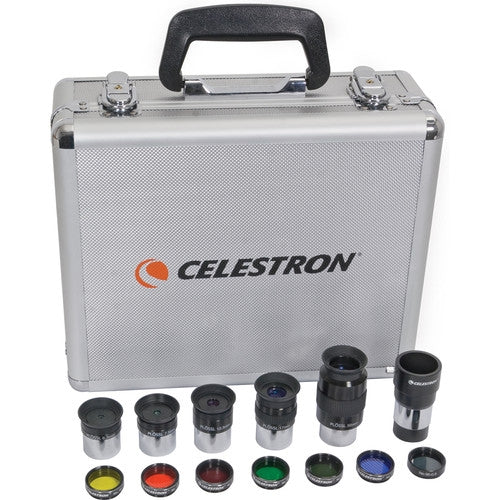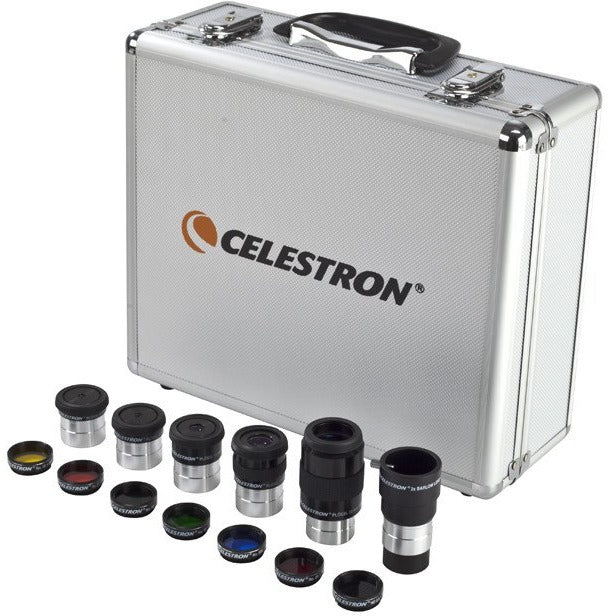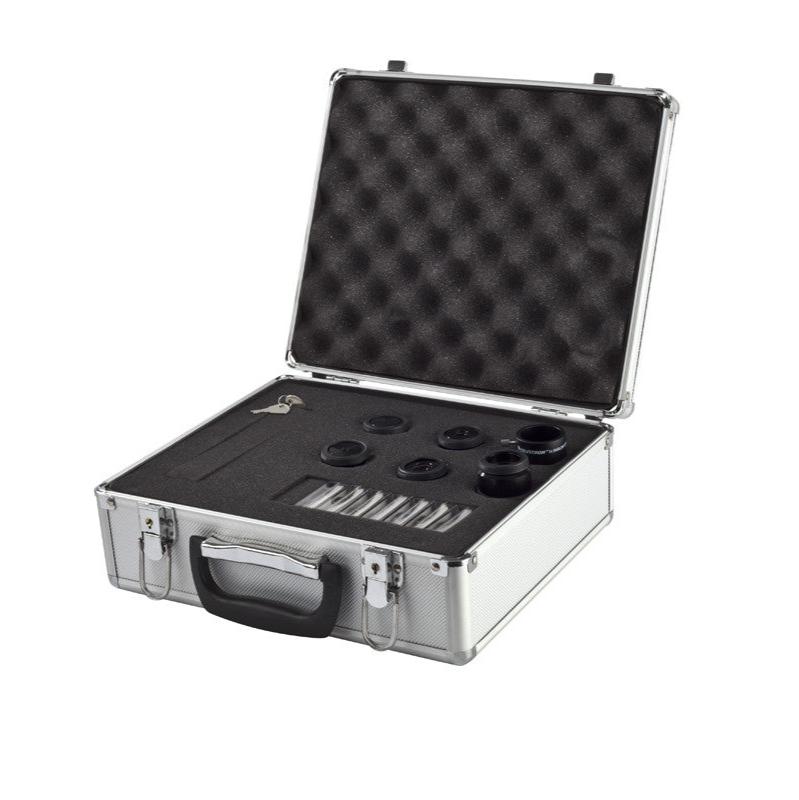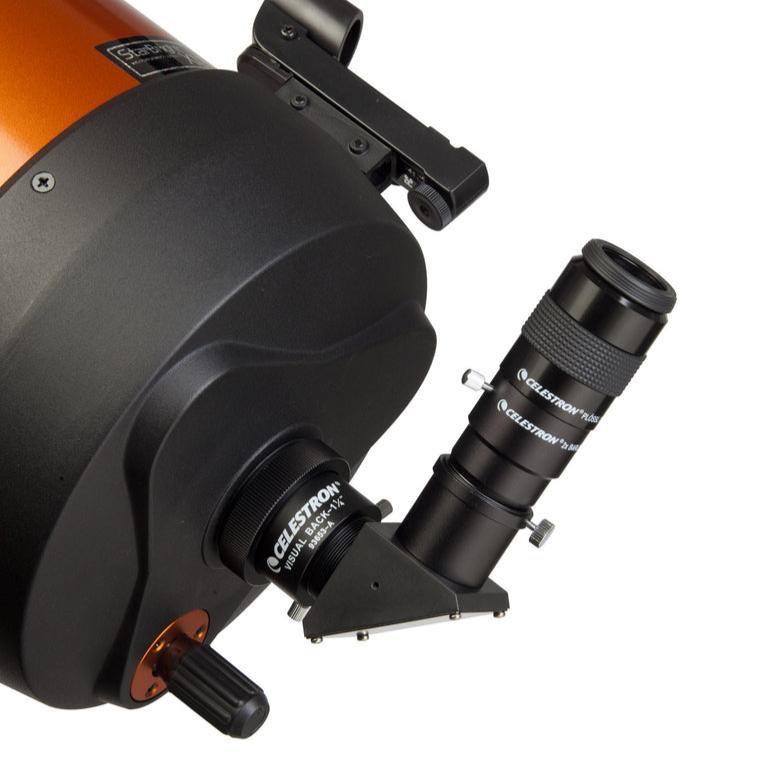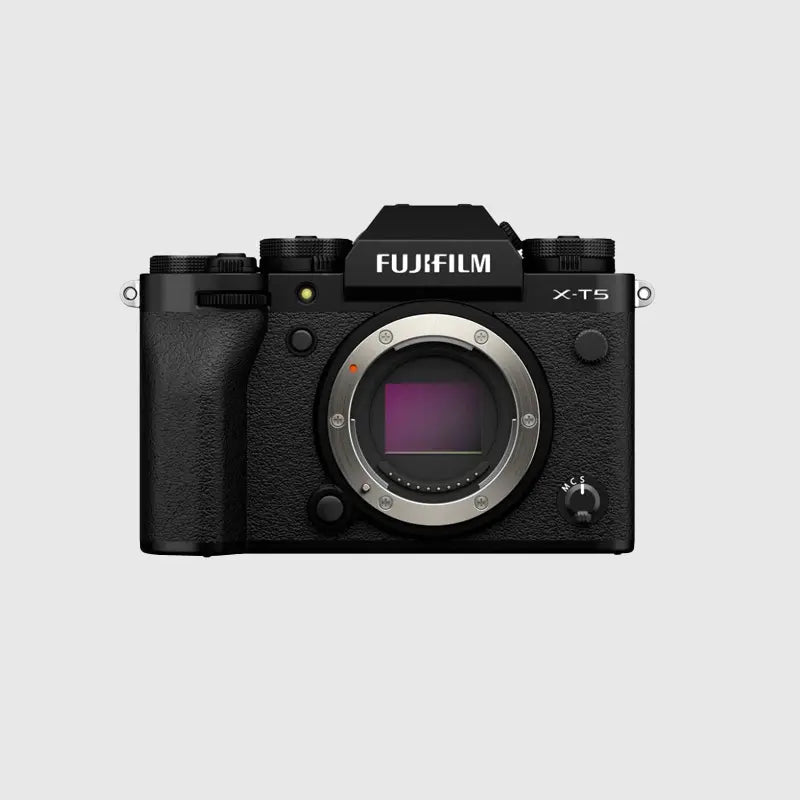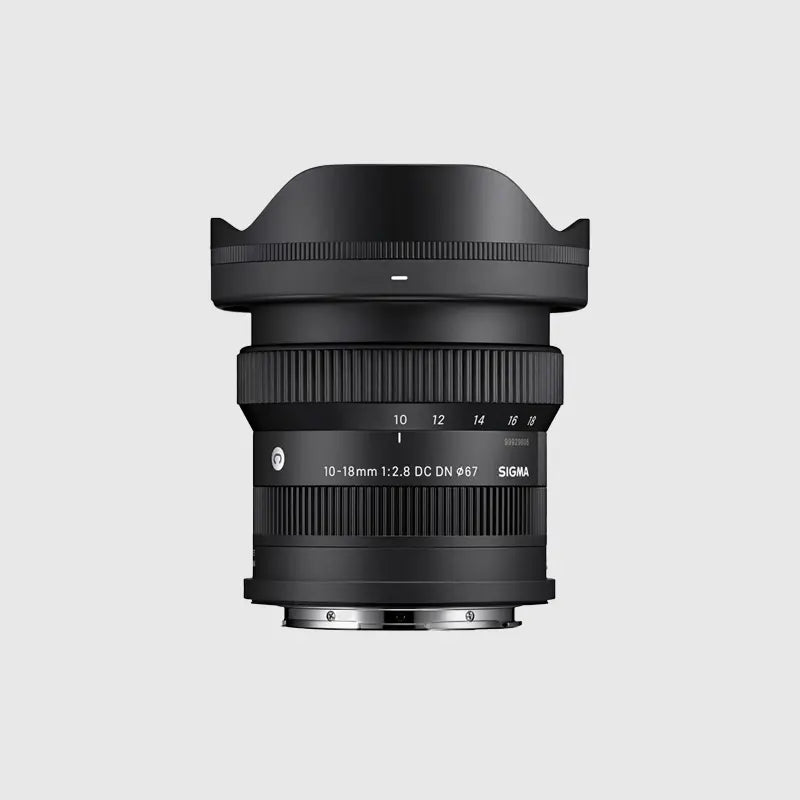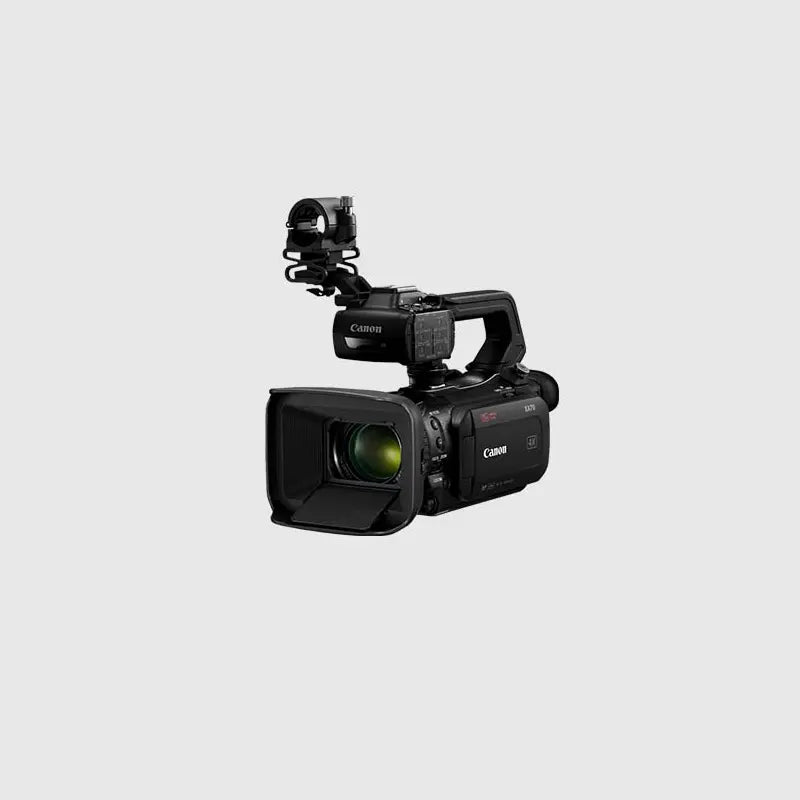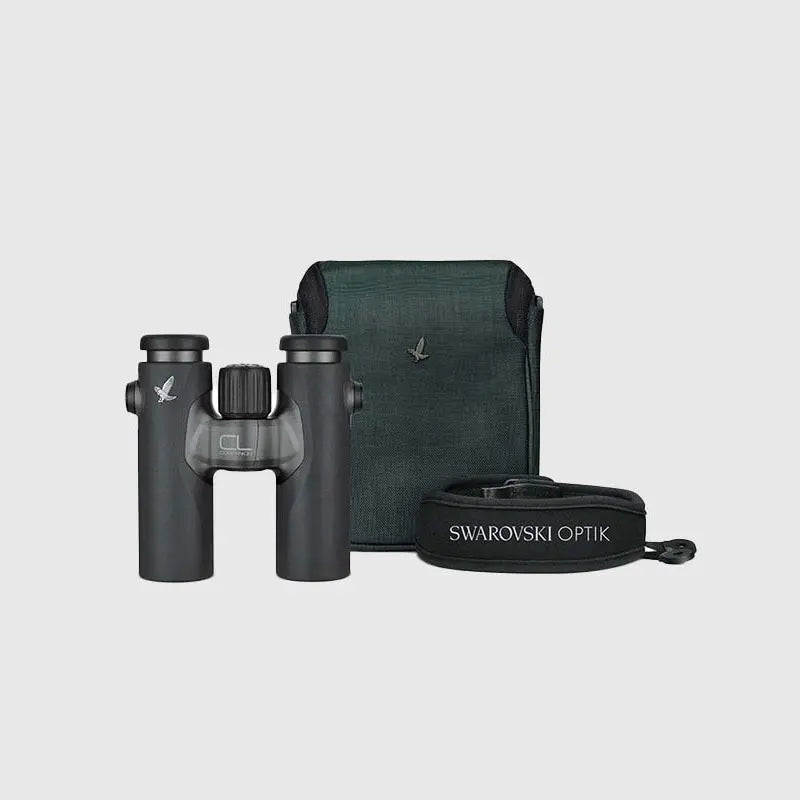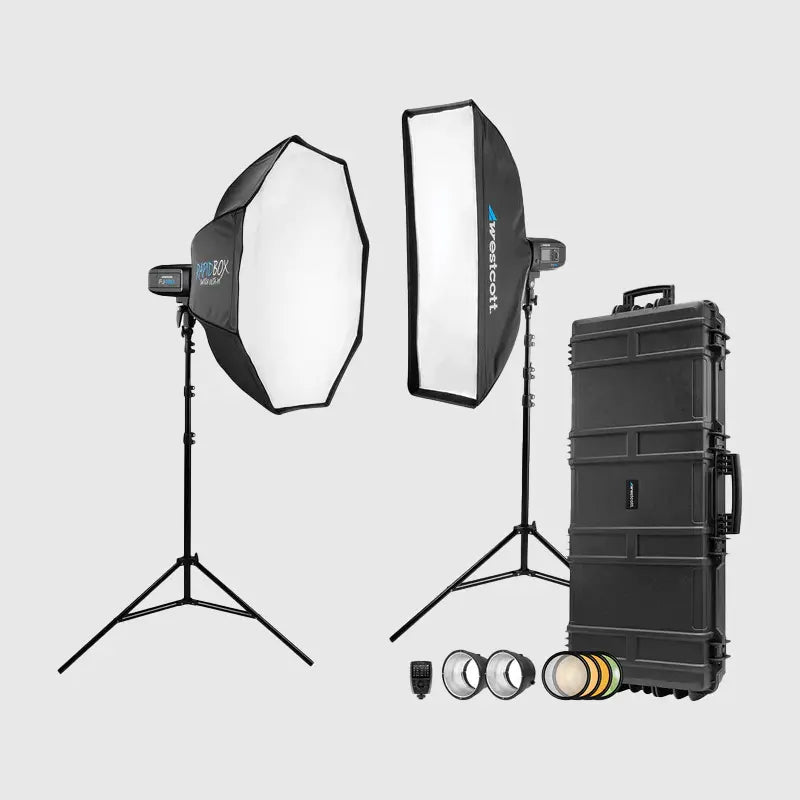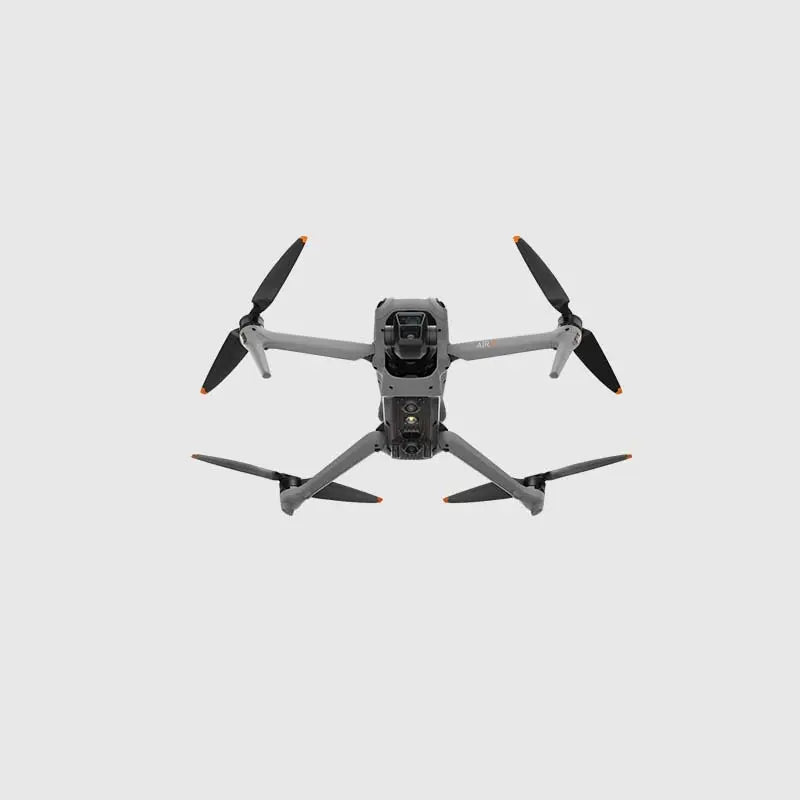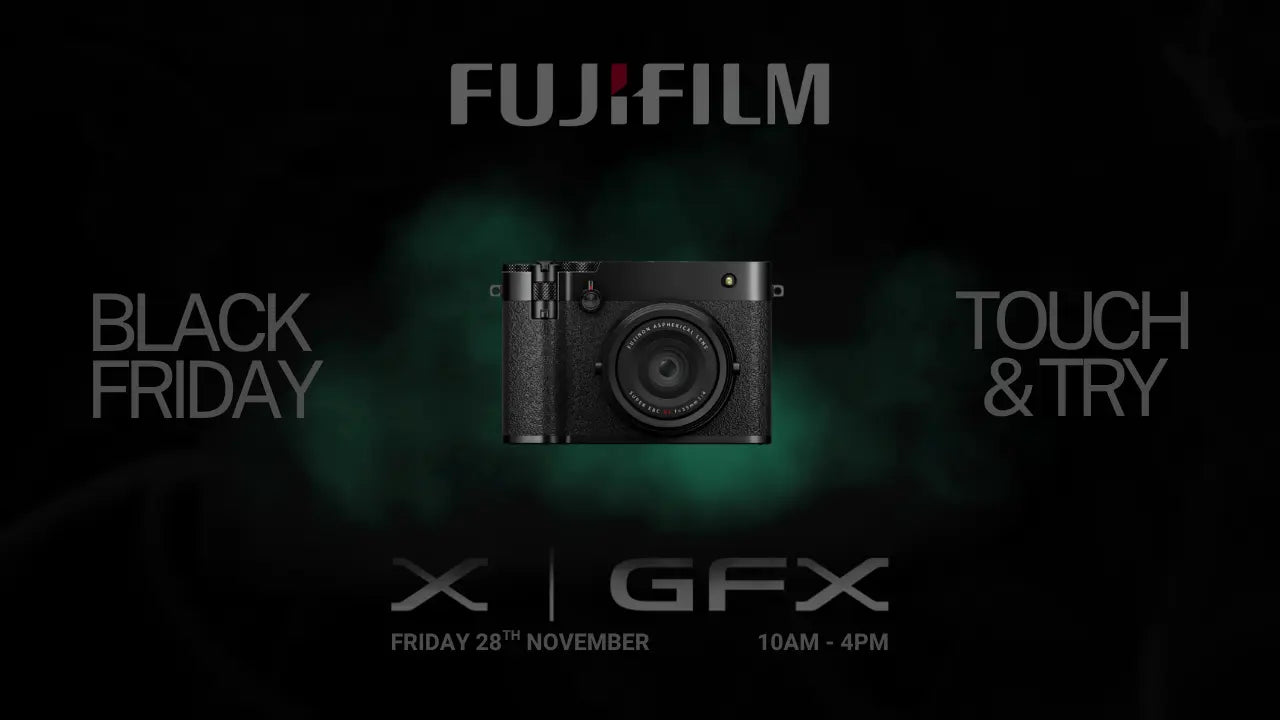Product Description
Celestron Eyepiece and Filter Kit (1.25”): Essential Accessories for Enhanced Planetary Observation
The Celestron 1.25” Eyepiece and Filter Kit equips you with a versatile range of tools to elevate your stargazing and planetary observation. Designed for both novice and experienced astronomers, this kit features five high-quality Plossl eyepieces, six planetary filters, a neutral density Moon filter, and a powerful 2x Barlow lens—all carefully crafted to enhance detail, contrast, and magnification for a more immersive experience. Packaged in a durable aluminium carrying case with die-cut foam, the kit provides secure and organised storage for your accessories.
Complete Eyepiece Range for Versatile Viewing
This kit includes five Plossl eyepieces with 1.25” diameter barrels, offering a range of magnifications to suit any viewing scenario:
- 32mm Eyepiece: Low magnification with maximum eye relief and high light transmittance, ideal for wide-field observations.
- 17mm Eyepiece: Provides higher magnification without compromising brightness.
- 13mm Eyepiece: Balanced mid-range magnification, perfect for general viewing.
- 8mm Eyepiece: Delivers high magnification with longer eye relief than the 6mm for a comfortable viewing experience.
- 6mm Eyepiece: Offers the highest magnification, ideal for viewing finer planetary details.
All eyepieces feature anti-reflection multi-coated optics, enhancing light transmission, colour accuracy, and contrast for sharp, bright images with a generous 52° apparent angle of view.
Enhanced Detail with Six Planetary Filters
Six coloured filters are included, each designed to improve contrast and reveal details on specific planets:
- #80A Blue: Highlights details on Jupiter and Saturn, enhancing the Great Red Spot and cloud belts, and also useful for lunar observations.
- #58 Green: Increases contrast in Jupiter’s cloud belts and polar regions on Saturn, and highlights the polar ice caps on Mars.
- #56 Light Green: Excellent for Martian polar ice caps, Jupiter’s atmosphere, and lunar details.
- #25 Red: Boosts contrast on Jupiter’s cloud formations and Mars’ polar ice caps by blocking blue and green wavelengths.
- #21 Orange: Enhances Martian surface boundaries and details in Jupiter’s belts and the Great Red Spot.
- #12 Deep Yellow: Accentuates red and orange features on Jupiter and Saturn, and the blue clouds in Mars’ atmosphere.
Each filter fits standard 1.25” eyepieces, making them easy to use and interchange, allowing you to fine-tune your viewing to match specific planetary details.
Moon Filter for Safe Lunar Observation
The neutral density Moon filter reduces glare from the Moon’s surface during full or near-full phases, allowing for comfortable and detailed viewing. It also improves contrast on the lunar surface and enhances details on Venus, making it a versatile addition to your observing toolkit.
Powerful 2x Barlow Lens for Extended Magnification
With a 1.25” diameter, the 2x Barlow lens doubles the magnification of any eyepiece used with it, allowing for more detailed planetary views without sacrificing the eyepiece’s eye relief. This feature is invaluable for those seeking greater magnification for high-resolution views of distant objects.
Protective Aluminium Carrying Case
The Celestron Eyepiece and Filter Kit is housed in a hard aluminium case with reinforced edges and corners for secure storage and transport. The dual latch-locks and hinge carrying handle provide convenient handling, while the die-cut foam interior cushions each accessory, protecting them from damage. There is also room for additional accessories, with customisable foam space to fit your unique setup.
Kit Contents
- Five Plossl Eyepieces: 6mm, 8mm, 13mm, 17mm, and 32mm with anti-reflection multi-coated optics
- Six Coloured Planetary Filters: #80A Blue, #58 Green, #56 Light Green, #25 Red, #21 Orange, #12 Deep Yellow
- Moon Filter: Reduces glare for safe lunar viewing
- 2x Barlow Lens: Doubles magnification while preserving eye relief
- Hard Aluminium Case: Securely stores and protects accessories with customisable foam interior
With the Celestron 1.25” Eyepiece and Filter Kit, transform your telescope into a powerful tool for planetary observation. This comprehensive set of high-quality accessories offers everything you need for an enriched stargazing experience, all in one convenient and durable case.
Payment & Security
Your payment information is processed securely. We do not store credit card details nor have access to your credit card information.

